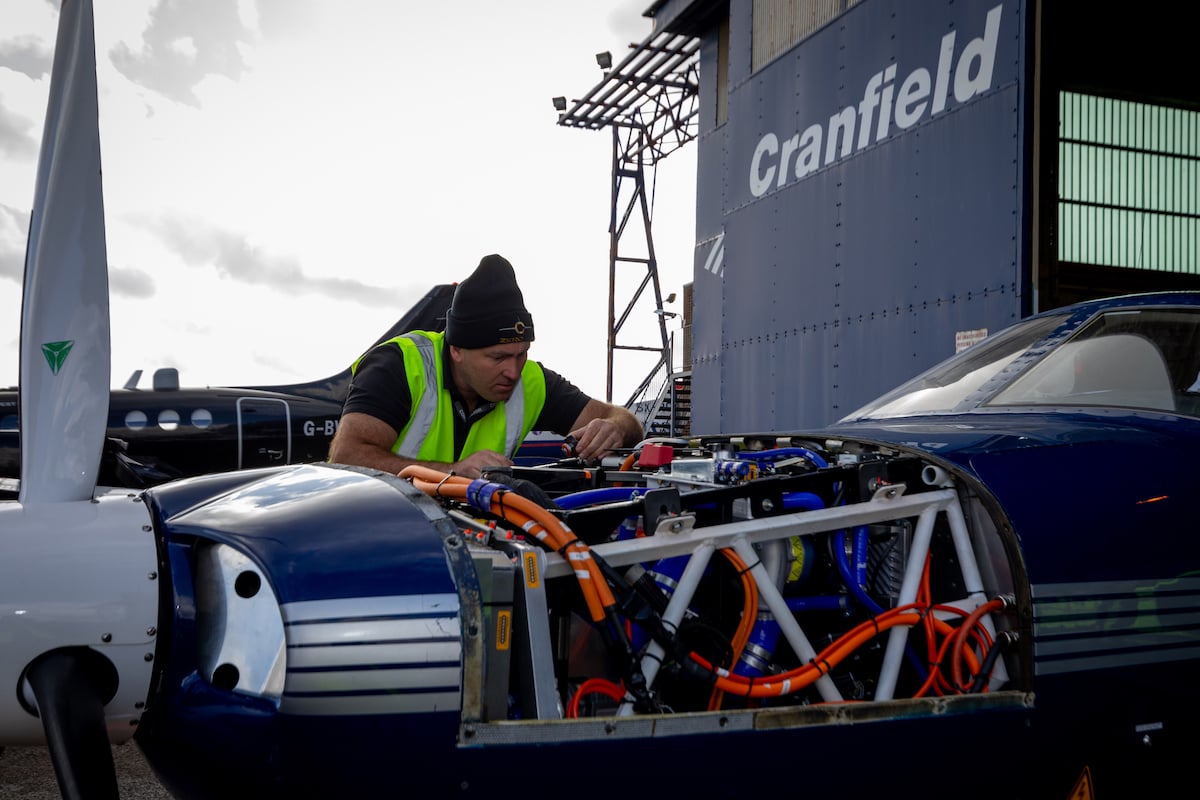Click Here to View This Page on Production Frontend
Click Here to Export Node Content
Click Here to View Printer-Friendly Version (Raw Backend)
Note: front-end display has links to styled print versions.
Content Node ID: 418756
The UK’s Aerospace Technology Institute (ATI) this week announced an £8 million ($10 million) funding round through its Research & Development for Smaller Business program. With support from the government’s Department for Business, Energy & Industrial Strategy (BEIS), and Innovate UK, the program is part of a wider effort to support the development of technology to achieve the country’s ambitions for reducing carbon emissions from aviation.
Expressions of interest can be submitted between November 9 and January 6, and shortlisted applicants will be invited to submit full proposals early in 2021. ATI and Innovate UK will hold a virtual briefing event for the program on November 2.
The program is intended to support R&D work on new aircraft, advanced systems, aerostructures, propulsion and power, and “cost-cutting enablers.” Proposed projects must include at least one micro, small, or medium-sized enterprise (SMEs) and cover work to be conducted in the UK and lasting between 12 and 36 months. Eligible costs must range between £300,000 and £1.5 million, with at least 50 percent of the available funds due to go to SMEs.
This year has seen a renewed emphasis by ATI on work focused on reducing carbon emissions from aviation, and this has brought eVTOL aircraft developments more squarely into the scope of its support through new programs such as FlyZero. Through 2026, annual funding of around £300 million is available, raised on a 50/50 basis between the government and industry.
Funding is also available through ATI’s Strategic Programme, which reviews applications for grants of £1 million and higher on a quarterly basis, with £8 million being the average amount awarded. One of the major beneficiaries of this fund was the E-Fan X program, led by Rolls-Royce and Airbus, to develop a hybrid-electric airliner. It received a significant share of the £255 million in funding announced by the BEIS in July 2018.
However, E-Fan X was abruptly canceled in late April, after the main partners decided not to proceed to the planned flight test phase in 2021. This prompted some criticism from startups that funding via ATI may unduly favor large aerospace groups like Rolls-Royce, which acquired Siemens’s eAircraft business during the project.
Speaking with FutureFlight, ATI’s corporate development officer, Malcolm Scott, expressed regret about the cancellation of E-Fan X before it reached the flight test phase. However, he insisted that large companies do not benefit disproportionately from funding and pointed out that 202 of the 340 organizations receiving money as of mid-September were SMEs.
Another recent recipient of Strategic Programme funding was ZeroAvia, which is working on plans to convert existing fixed-wing aircraft to hydrogen power. The California-based startup agreed to base development work for the so-called HyFlyer project to Cranfield in the UK and received £2.7 million in government support.
In September, UK-based Vertical Aerospace received £2.3 million in funding through ATI to support the development of a so-called smart charger for its VA-1X eVTOL aircraft. The company, which is partnered with Warwick University for the project, says the new charger will boost performance and safety
Smaller grants of up to £150,000 are also available through the National Aerospace Technology Exploitation Programme, which ATI administers. “The idea is to target companies that are inexperienced at R&D so that they can learn more about how to do it and get a lot of mentoring, as well as being introduced to potential customers or sponsors,” Scott explained. Each year, the program has two calls for applications and generally supports around 30 new projects.
Another funding stream aimed at aerospace startups is the ATI Boeing Accelerator. At the end of September, applications for the second cohort of nine new ventures closed and those selected will be eligible for up to £100,000 in funding, as well as mentoring and support through ATI and Boeing as a sponsor.
In the wake of the Covid-19 crisis, countries such as France and Germany have made significant amounts of new government funding available to support R&D work in the aerospace sector. According to ATI, UK funding has kept pace with the country’s aerospace rivals, albeit through different channels, in part because the country does not have a national research body for the industry, unlike France (Onera), Germany (DLR), and the U.S. (NASA).
Earlier this UK industry group ADS, which established ATI, launched a review of funding needs for companies that have come under severe financial pressure due to the unprecedentedly steep decline in air transport. This is being led by former Airbus executive Tom Williams, who is chair of the group’s supply chain task force.
Meanwhile, ATI is now recruiting key positions for its FlyZero project to achieve zero-carbon air transportation by coordinating collaborative work between industry and various universities. It is looking to fill the following roles: chief engineer, head of commercial strategy, head of sustainability, head of project management, head of industrial strategy, academic coordinator, and communications manager.
